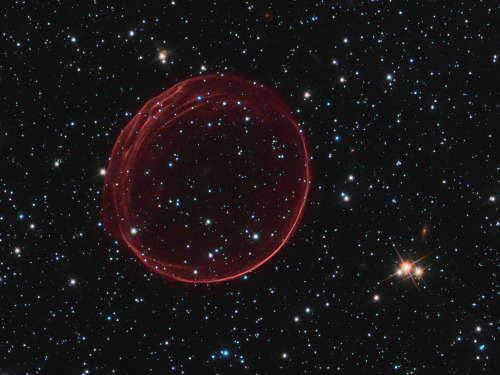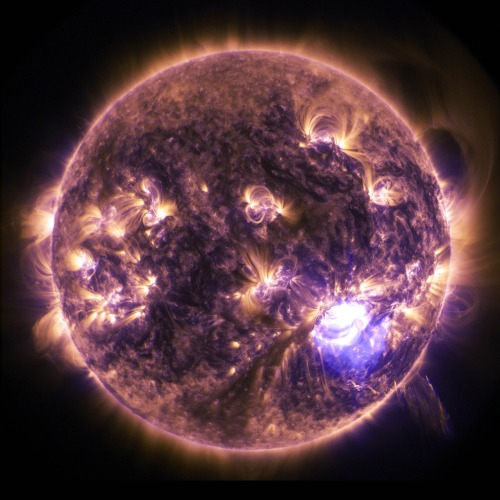Space Text


space text
solid text
More Posts from Anaceinspace-blog and Others

Hubbles image of the Tarantula Nebula with an estimate 800,000 stars
js

Highway to the skyway in Arches National Park
js

Galactic Standstill Lake Tenaya, California
js

30 Doradus, located in the heart of the Tarantula nebula, is the brightest star-forming region in our galactic neighborhood. The nebula resides 170,000 light-years away in the Large Magellanic Cloud.
js
How Well Do You Know Your Space Photos?
Can you guess the subject of each of these pictures? How many will you get right? Test your friends and family to see who knows their space photos the best.
1. Ice on Earth or a Picture of Mars?

2. Dry Land on Earth or a Close-Up of Jupiter?

3. Mercury or Our Moon?

4. Do You Think This is Mars or Our Home Planet?

5. Waves on Jupiter or Saturn?

6. Is this a picture of Mars or Earth?

7. Can You Tell Which is Europa and Which is the Bottom of a Frying Pan?

8. Close-Up of Our Moon or Dwarf Planet Ceres?

9. A Weird World or Our Own World?

10. The Red Planet or a Red Desert?

Answers
1. Mars. You might be surprised, but this image taken by our Mars Reconnaissance Orbiter is of a light-toned deposit on the Martian surface. Some shapes in the terrain suggest erosion by a fluid moving north to south.
2. Earth. This image taken by our Earth Observing-1 satellite shows Lake Frome in central Australia. In this image, the salt lake appears bone-dry, filled with off-white sediment. This area of Australia receives 149 to 216 millimeters of rainfall a year on average, and the basins pass most of their time as saltpans.
3. Mercury. Our MESSENGER spacecraft captured this image of Mercury during a fly by in October 2008. It shows previously uncharted regions of the planet that have large craters with an internal smoothness similar to Earth’s own moon. It is thought that these craters were to have been flooded by lava flows that are old but not as old as the surrounding more highly cratered surface.
4. Earth. Surprisingly, this image take from the International Space Station shows the western half of the Arabian peninsula in Saudi Arabia. It not only contains large expanses of sand and gravel, but extensive lava fields known as haraat.
5. Saturn. Although this pattern of waves is similar to those seen on Jupiter, this is actually a picture of Saturn. The pattern of an iconic surfer’s wave, has been observed in many places all over the universe, including at the edges of Earth’s magnetic environment.
6. Mars. This image was taken by our Mars Reconnaissance Orbiter and shows dunes of sand-sized materials that have been trapped on the floors of many Martian craters. The dunes are linear, thought to be due to shifting wind directions.
7. Left: Europa. Right: Frying Pan. Europa is one of Jupiter’s moons, and is about the same size as Earth’s moon.
8. Ceres. This image taken by our Dawn spacecraft shows an intriguing mountain on dwarf planet Ceres protruding from a relatively smooth area.
9. Earth. This image of the Bazman volcano is located in a remote region of souther Iran. While the volcano has the classic cone shape of a stratovolcano, it is also heavily dissected by channels that extend downwards from the summit.
10. Earth. This image of the Great Sandy Desert in northwest Australia shows a variety of dune forms across the region. The photo was taken by the Expedition 35 crew from the International Space Station.
Make sure to follow us on Tumblr for your regular dose of space:http://nasa.tumblr.com

Earth and Moon by Expedition 24 crew member
js

Me staring at the Milky Way and Aurora Australis
js

Celestial bubble SNR B0509-67.5 1 is the visible remnant of a powerful stellar explosion in the Large Magellanic Cloud, a small galaxy about 160 000 light-years from Earth; NASA/ESA/Hubble heritage team STScI/AURA/ J. Hughes
js

NASAs Solar Dynamics Observatory captured this image of a significant solar flare as seen in the bright flash on the right on Dec. 19, 2014. The image shows a subset of extreme ultraviolet light that highlights the extremely hot material in flares
js
-
 mentalmeles liked this · 3 years ago
mentalmeles liked this · 3 years ago -
 marinbel liked this · 6 years ago
marinbel liked this · 6 years ago -
 yagurlshams reblogged this · 7 years ago
yagurlshams reblogged this · 7 years ago -
 fluffysempai reblogged this · 8 years ago
fluffysempai reblogged this · 8 years ago -
 igirchan liked this · 8 years ago
igirchan liked this · 8 years ago -
 queer-snail reblogged this · 8 years ago
queer-snail reblogged this · 8 years ago -
 queer-snail liked this · 8 years ago
queer-snail liked this · 8 years ago -
 fvckrvse liked this · 8 years ago
fvckrvse liked this · 8 years ago -
 trespassingcore liked this · 8 years ago
trespassingcore liked this · 8 years ago -
 imstillturningout liked this · 8 years ago
imstillturningout liked this · 8 years ago -
 sassbastianb reblogged this · 8 years ago
sassbastianb reblogged this · 8 years ago -
 asexualglowcloud reblogged this · 8 years ago
asexualglowcloud reblogged this · 8 years ago -
 never-seen-a-nevergreen liked this · 8 years ago
never-seen-a-nevergreen liked this · 8 years ago -
 vampirecherrie reblogged this · 8 years ago
vampirecherrie reblogged this · 8 years ago -
 xkoalabearx-blog1 reblogged this · 8 years ago
xkoalabearx-blog1 reblogged this · 8 years ago -
 xkoalabearx-blog1 liked this · 8 years ago
xkoalabearx-blog1 liked this · 8 years ago -
 starrbar reblogged this · 8 years ago
starrbar reblogged this · 8 years ago -
 starrbar liked this · 8 years ago
starrbar liked this · 8 years ago -
 elly-faygh-8 liked this · 8 years ago
elly-faygh-8 liked this · 8 years ago -
 oodlesthepsychoticcupcake liked this · 8 years ago
oodlesthepsychoticcupcake liked this · 8 years ago -
 eeby-the-mcdeeby liked this · 8 years ago
eeby-the-mcdeeby liked this · 8 years ago -
 typicalinfinite-blog reblogged this · 8 years ago
typicalinfinite-blog reblogged this · 8 years ago -
 eeveeworlds liked this · 8 years ago
eeveeworlds liked this · 8 years ago -
 enigma-absolute reblogged this · 8 years ago
enigma-absolute reblogged this · 8 years ago -
 enigma-absolute liked this · 8 years ago
enigma-absolute liked this · 8 years ago -
 xxtrampzxx-blog liked this · 8 years ago
xxtrampzxx-blog liked this · 8 years ago -
 drawerofcool liked this · 8 years ago
drawerofcool liked this · 8 years ago -
 labellelunaclaire reblogged this · 8 years ago
labellelunaclaire reblogged this · 8 years ago -
 humdrumvee liked this · 8 years ago
humdrumvee liked this · 8 years ago -
 lamachetera liked this · 8 years ago
lamachetera liked this · 8 years ago -
 upinthefluff reblogged this · 8 years ago
upinthefluff reblogged this · 8 years ago -
 overthinkingambivert liked this · 8 years ago
overthinkingambivert liked this · 8 years ago -
 snapbuttonsonadenimshirt reblogged this · 8 years ago
snapbuttonsonadenimshirt reblogged this · 8 years ago -
 tinycowboypirate reblogged this · 8 years ago
tinycowboypirate reblogged this · 8 years ago -
 royaltyisfree liked this · 8 years ago
royaltyisfree liked this · 8 years ago -
 belladxne reblogged this · 8 years ago
belladxne reblogged this · 8 years ago -
 aflowersmentality liked this · 8 years ago
aflowersmentality liked this · 8 years ago -
 theagent1 liked this · 8 years ago
theagent1 liked this · 8 years ago -
 tootiredbi liked this · 8 years ago
tootiredbi liked this · 8 years ago -
 gunpowder-tim reblogged this · 8 years ago
gunpowder-tim reblogged this · 8 years ago -
 gunpowder-tim liked this · 8 years ago
gunpowder-tim liked this · 8 years ago -
 tolkhien reblogged this · 8 years ago
tolkhien reblogged this · 8 years ago -
 myneutralguardian reblogged this · 8 years ago
myneutralguardian reblogged this · 8 years ago
I post asexual stuff and space stuff. ADMIN APPLICATIONS ARE OPEN CHECK NAVIGATION FOR LINK TO THE APPLICATION. Profile pic credits to mochakimono.tumblr.com
100 posts